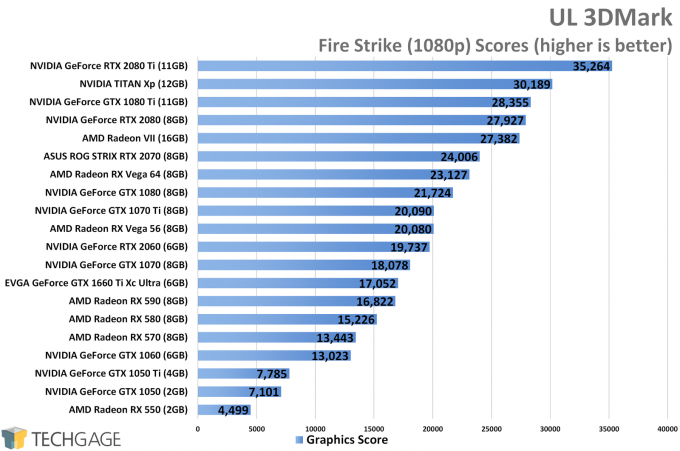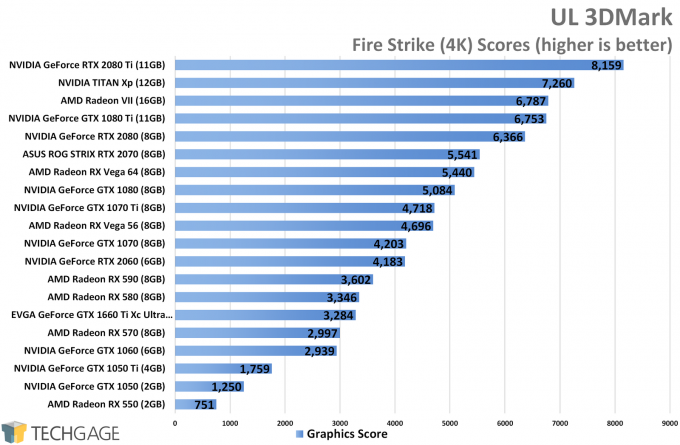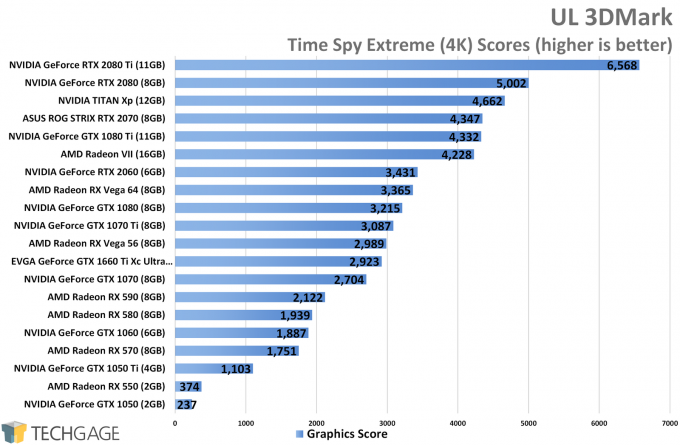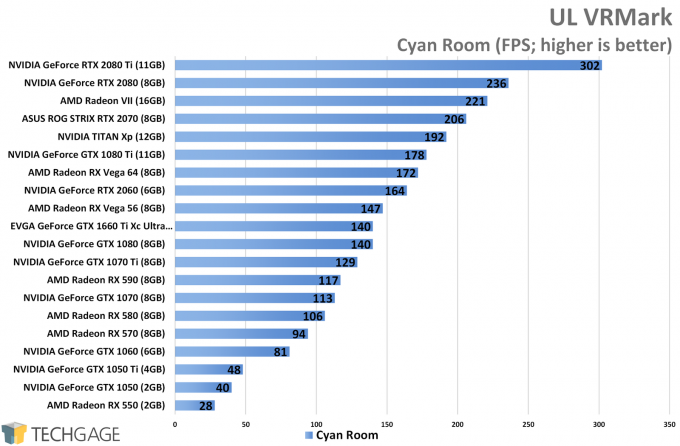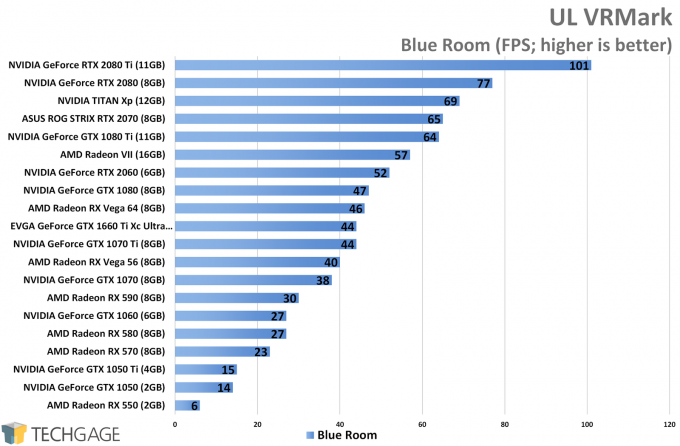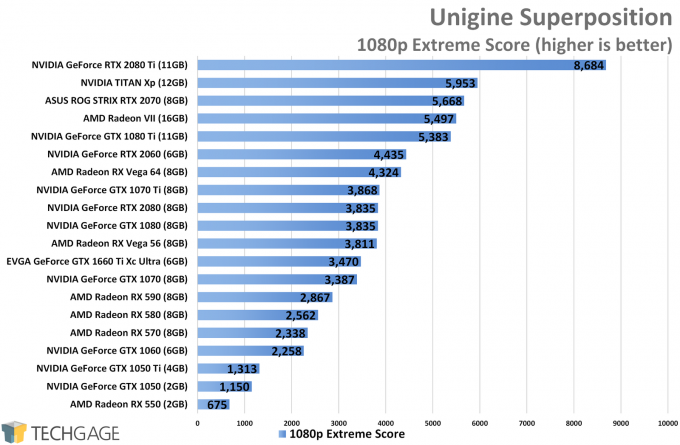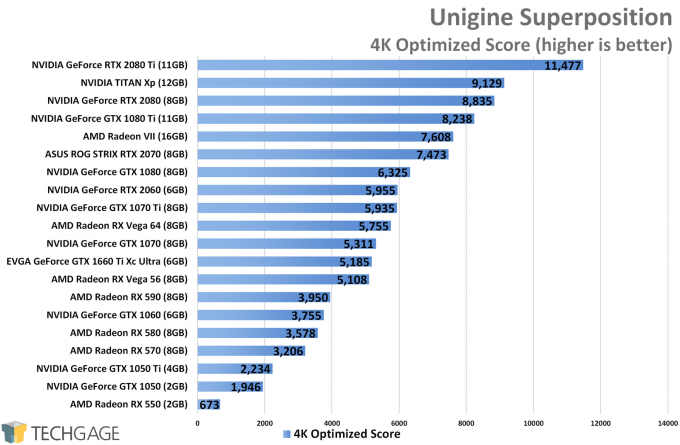- Qualcomm Launches Snapdragon 4 Gen 2 Mobile Platform
- AMD Launches Ryzen PRO 7000 Series Mobile & Desktop Platform
- Intel Launches Sleek Single-Slot Arc Pro A60 Workstation Graphics Card
- NVIDIA Announces Latest Ada Lovelace Additions: GeForce RTX 4060 Ti & RTX 4060
- Maxon Redshift With AMD Radeon GPU Rendering Support Now Available
EVGA GeForce GTX 1660 Ti Xc Ultra Gaming 1080p & 1440p Gaming Performance

NVIDIA’s GeForce GTX 1660 Ti becomes the fifth card based on Turing to be released, but unlike the RTX cards we’ve seen up to this point, the 1660 Ti foregoes Tensors and RT cores in favor of delivering a more competitively-priced product, and an all-around enticing competitor. Let’s see how it stacks up against NVIDIA’s own lineup, and AMD’s competition.
Page 4 – Synthetic: 3DMark, VRMark & Superposition
UL 3DMark
In our real gaming tests, we saw the 1660 Ti outperform the RX 590 in many cases, and keep up to the Vega 56 just as often. In multiple cases, the 1660 Ti even managed to outperform the Vega 56, which at SRP costs much more. But now we come to 3DMark, which paints a different picture. Here, the V56 still pulls far ahead of the 1660 Ti, especially at 4K. With Time Spy‘s 4K test, optimizations help push the 1660 Ti closer towards the Vega 56.
Time Spy, being DX12 based, seems to run extremely on Turing, which now includes the GTX 1660 Ti. Gains there could be partly fueled by NVIDIA’s ability to run concurrent FP and INT operations. Shadow of the Tomb Raider makes use of that, and lo and behold, the 1660 Ti manages to keep up to the Vega 56 there, as well.
UL VRMark
We saw the 1660 Ti come close to RX Vega 56 performance in 3DMark’s Time Spy test, and in VRMark, we see similar things. All of the Turing-based GeForces sit near the top of the charts, with the newer RTX 2060 matching the last-gen GTX 1080 in the Cyan room, and matching it in Blue.
Unigine Superposition
Wrapping up our performance testing, Superposition shows the 1660 Ti falling behind the RX Vega 56 a little bit at 1080p, but the 4K test makes the cards almost equal. It’s clear that Turing has some very useful optimizations, easily seen in some benchmarks.
Support our efforts! With ad revenue at an all-time low for written websites, we're relying more than ever on reader support to help us continue putting so much effort into this type of content. You can support us by becoming a Patron, or by using our Amazon shopping affiliate links listed through our articles. Thanks for your support!





